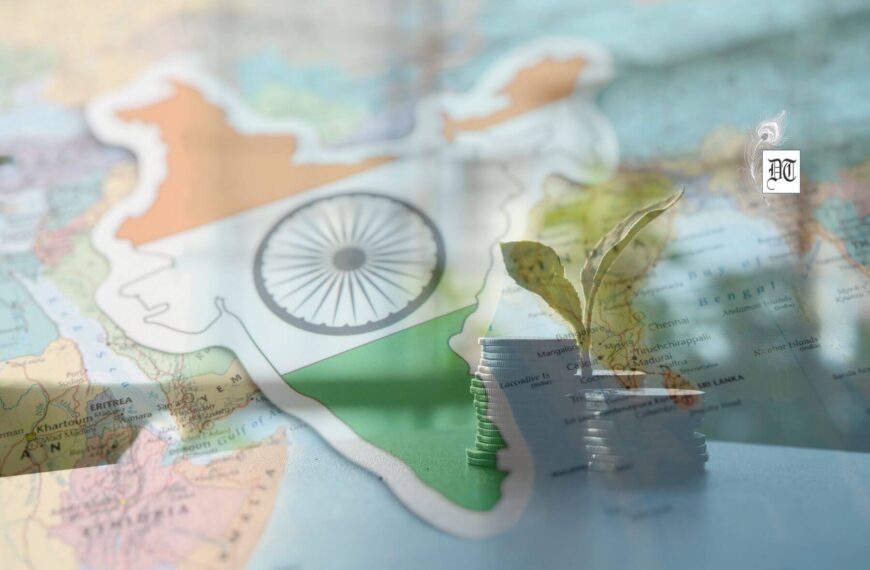The RBI Governor conveyed the picture of a robust Indian economy, surging ahead fast, with little spare capacity and demand rising on the back of bumper crop last season. All that good run in India was happening against the backdrop of an uncertain global economy, runaway oil prices and US Federal Reserve pursuing its policy of normalisation of its monetary policy. The upshot should be an overall pressure on price line. An analysis, for Different Truths.
Reserve Bank raising the repo rate by a quarter of one percent has clearly come as a relief whenever since the publication of the national income statistics indicated fourth-quarter growth rate to have sharply gone up to 7.7 percent. Many economists and financial market analysts had started saying that a rate hike was unavoidable in the current circumstances.
Going by the tone and tone and spirit of the RBI Governor’s statement after the policy announcement, this measure of the rate hike is neither here nor there. The Governor conveyed the picture of a robust Indian economy, surging ahead fast, with little spare capacity and demand rising on the back of bumper crop last season. All that good run in India was happening against the backdrop of an uncertain global economy, runaway oil prices and US Federal Reserve pursuing its policy of normalisation of its monetary policy. The upshot should be an overall pressure on price line.
In fact, that is why the governor sought to explain the rate has been hiked. As explained by the governor, of all these developments a rate hike decision has been taken mainly because of the worry over the rise in petroleum prices and its impact on price line. The decision was arrived at after three days of deliberations this week, which generally is spread over a couple of days only.
In the April policy review, the benchmark oil price was $66 per barrel. This has now gone up to over $74. Reserve bank seems to believe that the unrelenting upward movement of oil price is resulting in a cost-push inflationary environment. The governor felt that the rise is influencing both consumer price inflation as well as costs for the manufacturing sector. Besides, the overall rise in petrol price has influenced households’ inflation expectation as revealed in an RBI survey.
The second consideration for raising rate was the quickening of the pace of the economy. The fourth quarter growth has touched 7.7 percent which was a clear jump from the third quarter.
RBI believes that the output gap has nearly closed for the economy as a whole and capacity utilization has touched high base. Hence, there might be further inflationary pressure as manufacturers will gain higher pricing power.
However, these developments in the macro-economy mean that there should be a spurt in investments.
CSO figures indicated a jump in investment activity, which has also been noted in the RBI policy statement. Generally, a rising interest rate regime would discourage investments. However, the moderated hike in the interest rate of just quarter percent should not pose much of a threat to forthcoming investments.
Against this background will a minor interest rate hike be adequate to keep prices in check. As such, RBI states that inflation pace has picked up the pace and remained persistently above its targeted level of 4 percent. But as deputy governor pointed out there is a compositional change in inflation. That is, food and vegetable prices used to spurt in the summer months with lower arrivals in the market. That has been somewhat muted this year. RBI believes the spurt in seasonal food price rise is merely been “delayed’ so there is a distinct chance of it happening later in the summer. Be that as it may, it has been clearly seen interest rates have been a blunt tool contain that.
Fully aware of the upside risks, the RBI has put inflation for the first half of the year at between 4.8 percent and 4.9 percent and slightly lower at 4.7 percent in the second half. Given that inflation actually hits the projected level, it still remains within the RBI bounded inflation target of “4 percent -plus/minus 2 percent”. So an anticipatory move of a marginal quarter percent hike at this stage appears unnecessary. The RBI could have taken a little less cautionary approach and left the rates unchanged at this point in time.
By raising the interest rate RBI seems to have joined the band of all those emerging market central banks which have jacked up their interest rates from Indonesia to Argentina. But these economies are in a different league altogether some being in real crisis to some others facing serious financial markets turmoil. Compared to them, India is stable and growing robustly. In fact, RBI should project a more growth-friendly image than only an inflation hawk.
It should. First, you should keep your power dry and fully stocked with weapons. Interest rate hike could have been in its chest. Secondly, a depreciating rupee is helpful at this moment as the global export scene is becoming uncertain and fiercely competitive. US president has altogether upset the global trade order and it is difficult to foresee the way things should turn. China, being shunted out and facing severe headwinds in its biggest export market, will seek fresh pastures all around.
Although our external balances are not exactly dire, there is no room for complacency. On the other hand, we will be obliged to seek exports all the more with oil prices rising and outgo on oil purchases shooting. Lower interest rate regime is good for encouraging exports growth as well as slightly putting pressure on exchange rate. As such, our interest rates are comparatively higher and funds could flow to seek interest arbitrage. Of course, critics will point out that since there is the prospect of a hike in US rate, funds are flowing out. Solace is fund flows are as unpredictable as climate change.
In the end, our overall goal should be to maintain the growth impulse as well as possible within a framework of stable prices. The price line for the last few years, and with normal monsoon predictions for this year, inflation should remain benign. Now that we are already in mid-June, summer should be over in a jiffy. Food prices should remain for the most part comfortable. Oil prices would take their own course and might not rise too high from present levels, now that both Russia and Saudi are set to raise production. Prices have already started going down.
A marginal interest hike now was an unnecessary waste of breathe, as farmer Oak’s old dog in “Far from the Madding Crowd” used to think most of the time.
Anjan Roy
©IPA Service
Photo from the Internet





 By
By

 By
By
 By
By